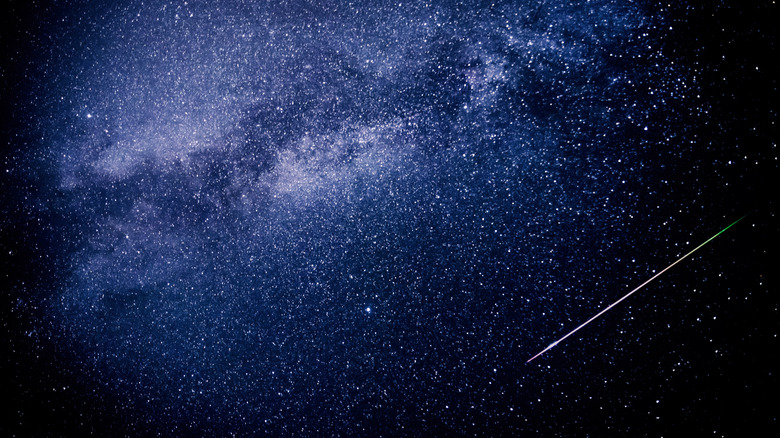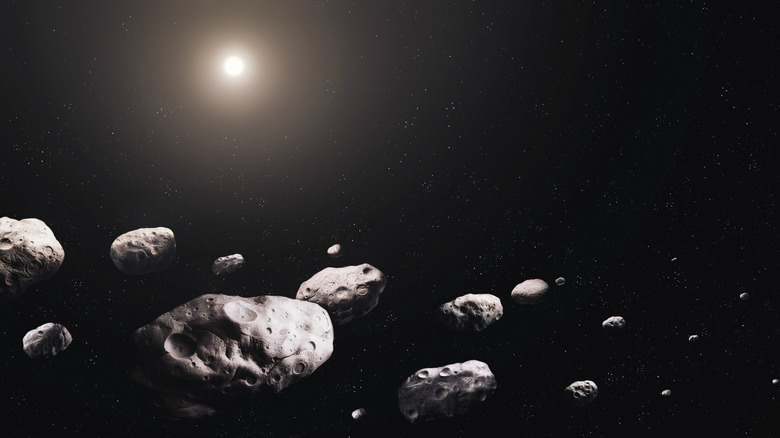We Finally Know What A Meteorite Sounds Like When It Hits The Earth
On July 25, 2024, a couple in Prince Edward Island, Canada, returned home from walking their dogs to find a sunburst pattern of grey-white dust covering their walkway. Unsure of what had happened, they turned to their home security camera footage for answers. What they saw was something fall out of the sky at incredible speed and slam into their doorstep, accompanied by what could easily be mistaken as the sound of a window shattering.
The couple's security camera had somewhat miraculously caught the final moments of a meteorite's journey through the solar system — footage that is now thought to be the only time audio and video evidence of such an event has ever been captured. On January 13, 2025, the Meteoritical Society, a group that catalogs all known meteorite falls, officially registered the impact, naming it the Charlottetown meteorite, whose name comes from the city where it landed. The cosmic traveler is one of only 69 meteorites that have been found in Canada, and its audio-visual record makes it a one-of-one.
At the urging of a relative who lives nearby and heard the impact, the couple got in touch with Chris Herd, a geologist and professor at the University of Alberta's Department of Earth and Atmospheric Sciences. Herd, who had serendipitously planned a family getaway to Prince Edward Island around the same time as the impact, happily took a detour to visit the impact site. Herd is also the curator of the university's Meteorite Collection, which is the largest of its kind in Canada, featuring around 450 meteorites from all over the world. "On average, we get about 10 inquiries per week," Herd told the University of Alberta, "99% of the time, the rocks are not meteorites." Thankfully, this case was an exception.
A 200 million-mile journey
The Prince Edward Island couple managed to collect around 7 grams of the fragmented space rock that, judging by the size of the meteorite's indent in the walkway, was likely the size of a small fruit. When the dust was analyzed, it was revealed to be an ordinary chondrite meteorite. Chondrites contain tiny spherical elements called chondrules, which are small silicate granules that may have their origin in the solar nebula — the ring of dust and gas that led to the formation of the solar system.
Meteorites are simply meteors — solid metallic or rocky space debris less than 4 feet in diameter — that survive the trip to the planet's surface. If the object hits the atmosphere at high enough speed, it begins to burn up, a feature people describe when they talk about shooting stars (you can even increase your chances of seeing a shooting star, if you know what you're doing).
Chondrite meteorites are the most commonly found on the planet, and we can trace their origin to the asteroid belt that sits between Mars and Jupiter, whose rocky materials sometimes get dislodged due to collisions or gravitational pulls from nearby planets. This means that the Charlottetown meteorite traveled for roughly 200 million miles (at least) before it ended its journey in spectacular fashion. And while the meteorite itself isn't a unique find, the fact that the scientific community now has audio evidence of what an impact sounds like is priceless. For more on the significance of impacts from space, check out some guides to the meteor strike that likely sped up evolution and the Northern Taurids meteor shower.

